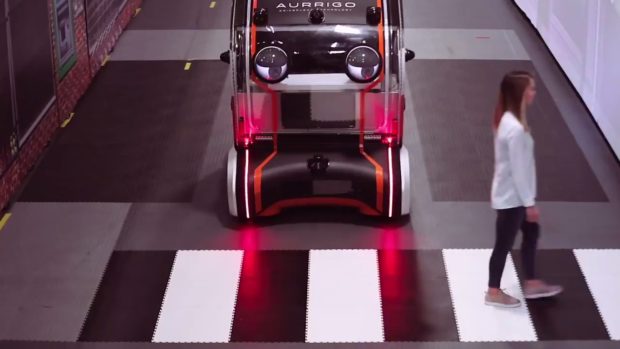
Image: Twitter/@JLR_News
Car maker Jaguar Land Rover added virtual “googly” eyes to a self-driving car to make it look more trustworthy.
With the current level of technology that self-driving or autonomous vehicles have, humans still find them to be untrustworthy. The car maker adopted an experiment with virtual eyes as a step toward changing the negative mentality, according to a statement.
The company started their experiments with self-driving “pods” that appear to be a little smaller than a golf cart. These “eye pods” would drive around a fabricated street until a pedestrian crosses the street. While stopped, the vehicle’s virtual eyes, which are displayed on the windshield, will appear to track the passing pedestrian.
The virtual eyes themselves cannot see the pedestrian, but simply mirror what its laser sensors see in front. This kind of “eye contact” would help to assure pedestrians that the self-driving vehicle knows they are there and are keeping an eye on them before driving on. In a way, it’s reassurance that the vehicle won’t mistakenly run them over while crossing.
Cognitive psychologists believe this kind of exchange between autonomous vehicle and human pedestrian could increase the trust for self-driving cars. “It’s second-nature to glance at the driver of the approaching vehicle before stepping into the road. Understanding how this translates in tomorrow’s more automated world is important,” said future mobility research manager Pete Bennett.
He added, “We want to know if it is beneficial to provide humans with information about a vehicle’s intentions or whether simply letting a pedestrian know it has been recognized is enough to improve confidence.”
A set of virtual googly eyes from one self-driving vehicle may seem cute as per this experiment, but multiply it a few times and it may end up creeping people out. Just imagine several large sets of virtual eyes following you while walking down a pedestrian lane. Either way, the experiments are still underway and will determine if it’s worth adding to future self-driving cars. /ra
RELATED STORIES:
British car firm to develop robotic repair ‘cockroach’
WATCH: US military develops wheels that change into tracks
Tim Cook finally admits to Apple self-driving car research